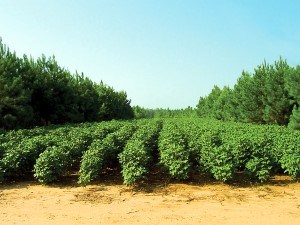Facts:
Agroforestry provides a various of ecosystem services which are beneficial both locally and globally in the fight against climate change. This way of farming can limit the amount of greenhouse gases in the atmosphere by binding carbon and nitrogen in vegetation and soil. At the same time, the cultivation system contributes to positive effects in the local area, as trees shade, bind soil and increase resistance to pests, drought and floods, as well as providing access to firewood and a variety of nutritious food.
